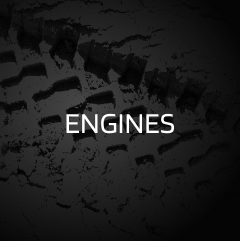 Camshaft
Camshaft
The Camshaft – A Critical Engine Component
As we continue our exploration of the internal combustion engine, our focus shifts to a small yet mighty component that plays a pivotal role in controlling the timing of engine events: the camshaft. Join us on a journey to demystify the camshaft and understand its critical functions within the heart of the engine.
Anatomy of a Camshaft:
The camshaft is a cylindrical rod with a series of lobes or cams along its length. Positioned within the engine block, it is linked to the crankshaft’s rotation and is responsible for actuating various valvetrain components. Delve into the intricacies of camshaft design, including the shape and size of lobes, and how these factors influence engine performance.
Valvetrain Control:
One of the primary functions of the camshaft is to control the opening and closing of intake and exhaust valves. Explore the relationship between the camshaft lobes and valve lift, understanding how this mechanical dance determines the engine’s breathing capability and overall efficiency.
Timing is Everything:
Camshaft timing is crucial for optimizing engine performance. Uncover the significance of valve timing in relation to the piston’s position and how technologies like variable valve timing (VVT) enhance flexibility. Dive into the complexities of valve overlap and its impact on combustion efficiency.
Types of Camshafts:
Different engines require different camshaft designs to suit their intended purposes. Explore the variations, from traditional single overhead cam (SOHC) setups to more complex dual overhead cam (DOHC) configurations. Understand how these designs influence valvetrain dynamics and overall engine characteristics.
Performance Applications:
In high-performance engines, camshafts are often upgraded to enhance power delivery. Learn about performance camshafts designed for increased lift and duration, catering to enthusiasts seeking more horsepower and torque. Discover the trade-offs and considerations involved in selecting the right camshaft for specific applications.
Camshaft Materials and Manufacturing:
The materials used in camshaft construction are critical for durability and precision. Delve into the choices between cast iron, chilled iron, and alloy steel, and understand the manufacturing processes that result in camshafts capable of withstanding the demands of engine operation.
Future Innovations:
As automotive technology advances, so does camshaft innovation. Explore emerging technologies, such as camless engines, where traditional camshafts are replaced by electronic actuators. Understand the potential benefits and challenges posed by these cutting-edge developments.
In conclusion, the camshaft emerges as a silent orchestrator within the engine, dictating the precise timing of valvetrain events. This article has shed light on its critical functions, design considerations, and its influence on engine performance. Stay tuned for the next installment as we continue our journey through the intricate components of internal combustion engines.

